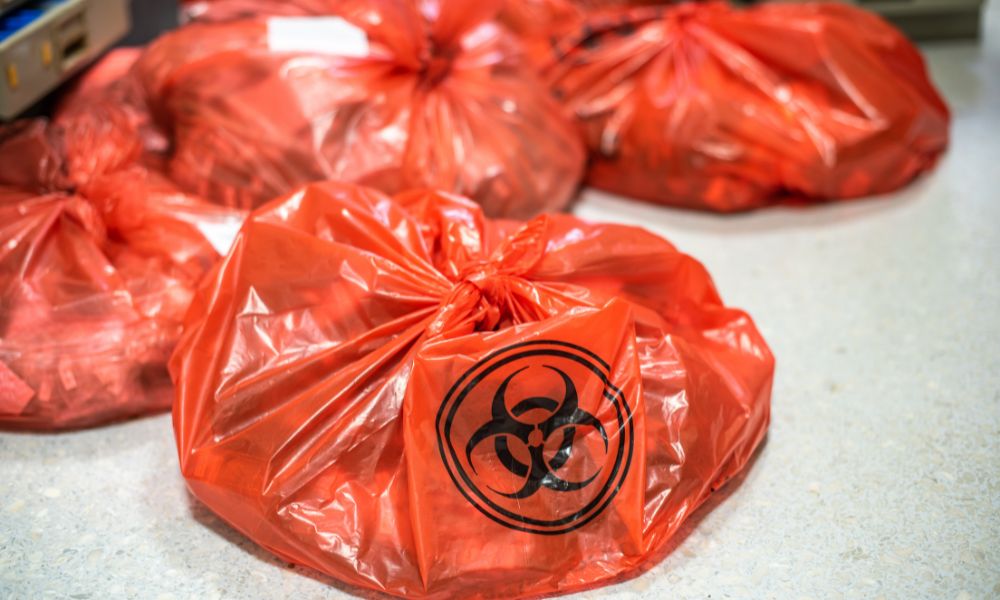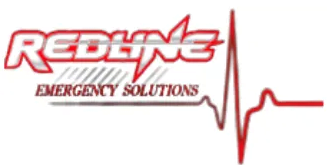
Most people think of blood, loss, tragedy, and sometimes avoidance when they think of a biohazard site. Tackling a biohazardous area can be quite an undertaking, and we do not recommend completing these cleanups as a DIY project. The toxins surrounding the area and the dangers of tampering with potential evidence can put DIYers in harm’s way.
It’s vital to hire a professional company to handle a biohazard cleanup so that you can avoid accidents or unsafe working conditions. Below, we go into more detail about what you can expect during a biohazard cleanup so you understand what happens after you place the call.
Understanding Biohazards
So what is biohazard cleanup? We will explore what a biohazard is and why it’s risky to tamper with to better equip you with the skills and mindset to avoid tackling a biohazard cleanup. Biohazards are biological hazards that pose potential health and safety risks to human or animal health and well-being. The most common biological hazard is blood, but other contributing factors include live fungus spores, human waste, infestations, and certain types of chemicals.
The CDC uses a classification system that enables cleanup crews and hazmat teams to understand the severity and extent of the toxins and biohazard, including the level of harm they pose to individuals near the affected area.
A level one risk includes contaminants such as E. coli and typically poses minimal risk to humans. Level two factors include but are not limited to hazards like HIV and have a moderate risk impact. Level three risks include a more severe impact on humans and animals as high-risk pathogens are present and may become airborne. A level four risk means a life-threatening hazard is present, airborne or otherwise, including but not limited to viruses such as Ebola.
Most Common Biohazard Scenarios
Biohazards can occur anywhere, anytime. Professional cleaning crews encounter a few common scenarios, whether residential or commercial. Fungus and mold infestations can occur in a range of settings due to an ignored moisture problem. This infestation also includes common issues like odor, backed-up sewage, and chemical spills.
Specific environments have other localized and common issues and occur most often in a residential setting. In this situation, professionals must address biohazardous materials and issues to avoid increasing health concerns for residents and animals. These issues include criminal activity, licensed and unlicensed vehicles, animal infestations, hoarding, and human fatalities.
What To Expect During the Cleanup
A typical property cleaning is not as intense as a biohazard cleanup. Simply wiping away dust and shining surfaces do not include the same level of risk as biohazardous materials and exposures. Leaving any trace of biohazard material behind can continue to put humans and animals at risk and increase their chances of illness or long-term complications. Additionally, there are various microbes invisible to the naked eye that only a professional crew can tackle.
We do not advise non-professionals to attempt a DIY cleaning; hiring a professional cleaning crew is the best plan of attack in the presence of biohazardous materials. You can fully expect a professional crew to come fully dressed and equipped in proper PPE (personal protection equipment) to avoid personal risk while cleaning. You might also see the professionals contain the affected areas or section off each space around the property to clean them properly and thoroughly.
Biohazard Cleanup: The Process
Depending on the present biohazard and the severity of the situation, biohazard cleanup includes relatively similar steps and cleaning supplies. With PPE considerations in the forefront, a crew will use hazmat suits, airtight gloves and booties, valid eye protection, and full-face coverings. Professionals properly assemble their gear before entering the contaminated areas to ensure their safety from start to finish. Getting the PPE incorrect or overlooking the small details can put cleaners in extreme danger.
If there is a presence of airborne pathogens, establishing a control room may be the next best step to allow cleaners to enter and exit the contaminated area without increasing the spread of hazardous materials. The crew will identify the source of biohazard materials, if applicable, and begin evaluating the spread and severity of the situation. It’s essential to note that time and age play a role in how severe a situation can become. Fluids can drip, A/C units can spread airborne pathogens, and the entire property can quickly become a biohazardous host.
After identifying the source, the crew will remove all unsavable items from the space to eliminate increased risks. Once removed, new surfaces will come to light and help the crew understand the bigger picture. The primary objective is to strip the area to the bones for thorough cleansing. The crew removes all items in accordance with local and state guidelines. They may also use a UV light to help with deodorizing and sanitizing.
Can I DIY Biohazard Cleanups?
No. As we’ve mentioned previously, tackling a biohazard cleanup as a DIY project is not in the best interest of your safety and the safety of the people, plants, and animals in the vicinity. Not only will you lack the proper PPE to protect yourself, but you’ll run into a few snafus along the way. A simple dust rag and all-purpose cleaning solution will not suffice on biohazard materials because these materials contain dangerous, potentially life-threatening microbes that can linger if not removed correctly.
The longer something hazardous sits, the more threatening the issue becomes. If you have concerns about the cost of professional cleaning or the delay in business production this may cause, call a service provider to inquire about their processes and cost. They can explain the situation in greater detail and answer your questions and concerns. They may be willing to work with you, depending on the situation.
Let the Professionals Tackle the Job
Who cleans up a crime scene, then? Hiring a professional for a biohazard cleanup is the best solution. This step ensures all parties involved are well taken care of, and everyone’s health and safety will go unaffected. If you or your team discovered biohazard materials after an accident occurred, call the professionals right away to evaluate the situation and take note of any health complications that might have occurred since the incident. You’ll want all parties involved to be seen or treated by their preferred healthcare professional to avoid long-term health issues.
Redline Emergency Solutions recognizes the inconvenience these scenarios may cause to anyone affected. During a biohazard cleanup, you can expect our crew to deliver a fast, reliable service that won’t hinder your daily life or routines. Call today to get an estimate for your property! You’ll be glad you did.


